I helped make the first Miata, and now I love its ancestor
I had never owned a car like this, one with pre-war roots, and I wasn’t looking for it. But if you’re bored and hunting on Craigslist long enough, you usually run across something that catches your eye. Something you probably shouldn’t buy.
That’s how I met Abigail.
Abigail is a 1952 MG TD. The TD is part of MG’s “T-Series” family, five models produced, one after the other, from 1936 to 1955. The TA came first, then the TB, the TC, the TD, and the TF. Each is a variation on the same basic idea. They all have long and flowing fenders, a long-stroke four-cylinder, a four-speed gearbox, and an ash-framed body. The TC, TD, and TF were built after World War II, but like so many cars of the era, their engineering basically dated to the 1930s.

The 54-hp TD met the world in 1949. It was really just a restyle and a light mechanical update of the TC. Both cars were relatively affordable and handled well. On the Miata project (See postscript: The author was a development engineer on the original Mazda Miata —Ed.) we had cited the T-Series as helping start this country’s sports-car craze, so I had a vague interest in owning one. Having just sold Edna, my ’64 Chrysler Imperial—the widest, largest, and most powerful American car made in its model year—it felt somehow right to be entranced by a diminutive lightweight like the TD.
The ad called the car an “older restoration,” noting that the owner needed to move it along to fund other projects. The following weekend, I visited the owner at his small farm near North Carolina’s coast and was smitten by the TD’s tomboy charm. It was essentially an upright piano on skinny tires.

We rolled the MG out into the sunshine. The owner started it with a simple pull of the starter knob. The engine sounded like a sewing machine. The car was indeed an excellent example, having received a frame-off restoration about eight years prior. The TD appeared to have been reassembled in the aisle of the Moss Motors warehouse—every rubber part was new, along with all the gaskets and trim. The metal bits had just enough patina to make the car look real to me.
In whole, it looked about like a 40,000-mile TD from, say, 1958. Not showroom-new, but not tattered, either—just the way I like my cars. The owner let the TD idle in the summer sun, no concern for overheating. I was impressed. Watching an English car idle for 30 minutes in 95-degree weather is like seeing a 90-year-old man do 100 push ups.
We struck a deal. I made plans to return the next weekend with either a trailer or a tow truck. On the 200-mile drive home, I texted a friend—let’s call him Q. He was a fellow Brit-sports-car aficionado. (Translation: patient with flaws, curious and willing to learn, steadfast in times of trouble. Good qualities in a car person or a friend).
Q said that he could help me pick up the MG with his trailer. But he’d only agree to help, he said, if we drove the TD back home.
“This car has not been on the road in eight years,” I said.
“Don’t wuss out,” he retorted. “What could go possibly wrong?”
And so the plan was made to drive together to get the car, then drive back in tandem, bracing for the possibilities that lay buried deep inside every one of that 70-year-old TD’s 1500-some-odd parts. The chase vehicle would be my 30-year-old Miata.
Yes, this is what counts as adventure in our man-bunned, flip-flop-wearing world: a three-hour drive on a paved road, in two cars, with no lions, tigers, or even bears.
At home, I made up a spares package. If you bring the tool/part/item, I figured, you probably won’t need it. A spare car battery fully charged: onboard. Gorilla tape and a small butane torch, plus some 12-gauge wire and solder: of course. Fix-a-flat and a jack: check. Carb cleaner and a length of fuel line: yep. We planned a route that avoided highways, sticking to interesting two-lanes with pull-off room and low traffic. (This was not our first British-sports-car rodeo.) I joined the Hagerty Driver’s Club and elected for the 150-mile towing option, then drew a circle of that radius around my home, which I called the “circle of safety.” Like an RAF pilot trying to get back across the English Channel, I knew that if I could just get the TD inside that radius—see the white cliffs of Dover—all would be well.
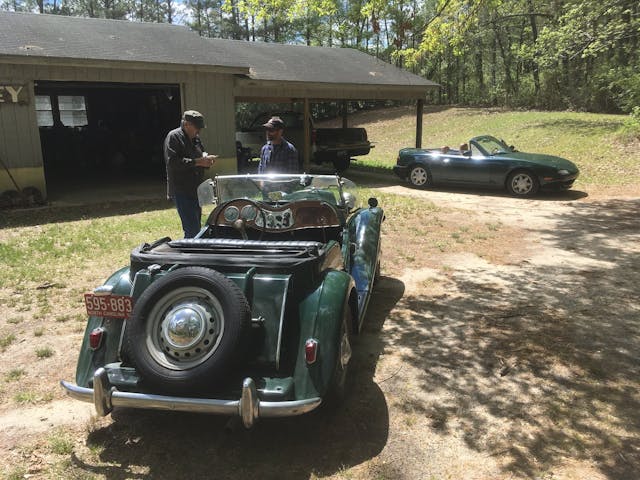
The following Saturday, we left to get the car. The trip there was uneventful, as most Miata trips are. When we arrived at the barn, the owner had the TD out in the sun and ready to go.
He looked around for a trailer, then back at us. “You’re going to drive this to Charlotte?”
“Any reason we shouldn’t?”
The man looked into my eyes for a double-count, the cash I had given him still palmed in his right hand. “Keep an eye on the fuel tank,” he said. “She clogs up now and then . . . ”

With that, we were off. It was noon. Plenty of margin for a three-hour drive on a lovely Saturday afternoon. I let Q drive first. First, I wanted to watch for any unusual behavior as the MG went down the road. Second, as a practical matter—I wanted to be able to see (and then collect) any parts that might fall off as Q got up to speed.
Speed being a relative term, of course, with a TD. When the car was new, it had a top-top-top speed of 74 mph. That number came in fourth gear, at the dizzying engine speed of 5500 rpm (a.k.a. the precipice of valve float).
The third reason I wanted to follow the car on that first leg? I am a visual person. Watching the MG bumble across eastern North Carolina was going to be fun.
That three-hour estimate would prove optimistic. At first, everything seemed fine. Ten minutes in, however, the car began to lose speed. Q raised his left arm and signaled—TDs don’t have visible turn signals—to pull off into a parking lot. The words of Road & Track’s Peter Egan arose from deep in my consciousness: It’s always the points.
I prepared myself for a little roadside diagnostics. This would be the first stop of more than a dozen. Over the next seven, not three, hours.

Pulling the distributor cap and rocking the car around in gear showed that, indeed, the gap on the MG’s ignition points was too small. Q assumed the kneeling position beside the engine, a posture familiar to T-Series owners (and to owners of early Porsche 911s—it’s a position of petition and humility, as if praying to the electrical gods). He made a quick adjustment and then we were off again, confident in our roadside tune-up.
Ten miles later, Q’s left hand waved once again. One more time, we pulled over to inspect the points. They were out of adjustment again, so we realigned them once more. We were only 10 miles closer to my circle of safety, and progress was agonizingly slow.
Ten more miles. Left hand up again. The points gap was now somehow too small. While messing around with the distributor, we realized the distributor had roughly half an inch of play, left to right, from a perished bushing. You could vary the points gap simply by pushing on the distributor’s body. On a subsequent stop, we took some zip ties and some spare fuel hose and used them to jam the distributor against a nearby object—in this case, the engine’s generator—forcing it into something like one position.
Setting off, we were emboldened, confident.
Ten minutes later, we were once again in a parking lot, once again looking at the distributor. The point gap was holding at an acceptable level. Emboldened by our diagnostic prowess, we quickly condemned the ignition condenser, a part that can cause intermittent poor running. There was a new one in a box of spares that came with the car. On it went. Back on the road we went.
At this point, I took over driving, having seen my fill of the TD’s rear and Q’s insistent hand signaling. We were about 20 miles to the edge of our tow range, and I was determined to make it. I was instantly reminded of how special old British sports cars are: tight steering, excellent shifters and transmissions, responsive brakes. I ran through my list of known English-girl names and settled on Abigail. The only real hiccup was a severe shimmy at speed, which I chalked up to flat-spotted tires. The whole chassis shook up and down, side-to-side, and in the yaw axis, all at once.
No matter—two miles later, the car was coughing and sputtering again. I pulled into the parking lot of an auto-parts store, ready to buy anything.
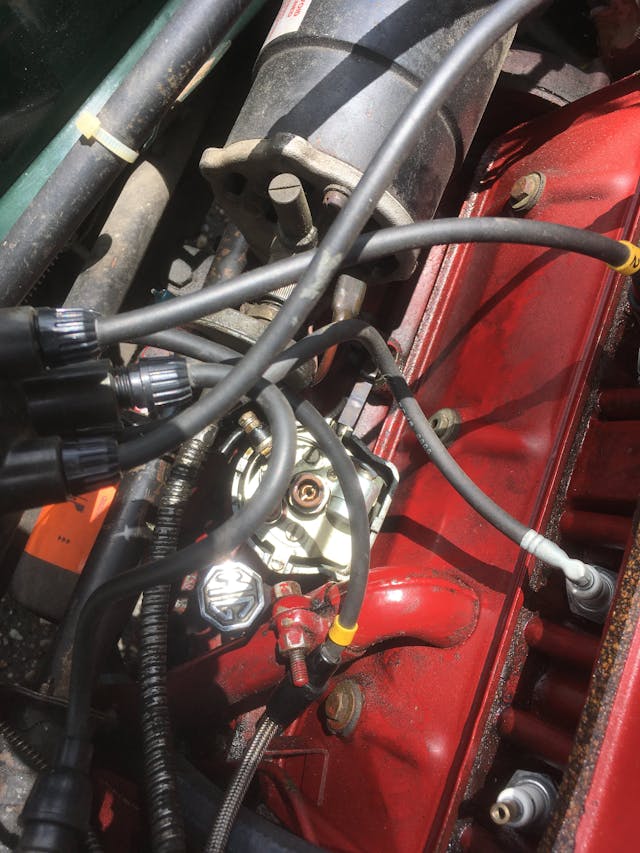
The seller’s parting words came back to me: She clogs up now and then.
I lay on the ground to inspect the fuel lines. A T-Series carries its fuel like a backpack, in a wedge-shaped slab tank just behind the body. When I opened one of the barbed fuel fittings beneath the tank, nothing came out. The barb’s innards were caked with flakes of rust.
Ah, I thought: It had never been the ignition! Our short stops to adjust the points had given the fuel system enough time to weep a few ounces of gas into the line, letting the engine restart. After which it would inevitably stall again, once fuel stopped flowing. A simple probe with a small stick cleared the line and got fuel gushing from the nipple. Once the gasoline ran clear, I put the hose back in place and moved to the front of the car, to the feed line at the carburetors. Fuel ran clear there pretty quickly, and then we were back on the road.
Well, almost. Along the way, the battery had grown too weak to turn the engine over, so we had to push-start the car.
I was reminded, once again, of the advantages of a lightweight sports car: You can push-start them when needed.
I sprinted out of the parking lot with bouts of full-throttle TD acceleration (a.k.a. barely keeping up with traffic). All was again great with the world. For 20 miles. Then my hand went up, and I repeated the fuel-purge routine. Nine more times, we performed this choreography, before reaching home, once every 15 miles or so. Toward the end, we got it down to a 90-second pit stop for both tank drain and carb-line purge.
We were well inside the towable radius now, but we felt we had licked the symptoms, if not the disease. Getting Abigail home under her own power had become a challenge. (On one of the purge routines, I noticed that the left rear brake cylinder was leaking. Something to address later—we were having trouble with propulsion, not stopping.)

In between these regular purge routines, I took inventory. The engine really didn’t mind going 5000 rpm at 65 mph. The steering was precise, the ride comfortable. A T-Series steering wheel is the size of an extra-large pizza and perfectly complements the wooden dash. The whole package worked well, and the attraction was undeniable. As a bonus, it was one of those cars so lovely to look at that you almost don’t mind taking in that beauty while sitting on the side of the road, wondering why the thing won’t run.
A few miles down the road, I looked in the mirror to see Q signaling from the Miata. I dove into a church’s parking lot, curious as to what could possibly could be wrong with our Japanese car. Q pulled up alongside.
“My phone’s weather app says we are driving into a rainstorm.” Then, in one of those I only have to run faster than the bear moments, he flipped up the Miata’s top with one hand and drove off.
I waved him back. We spent 10 minutes unfolding and erecting the MG’s prehistoric top. The car came from the factory with side curtains—clip-on fabric windows—but we didn’t have them. The TD’s roof amounted to a little more than a lousy umbrella, but it was better than no top at all. With that, we were off, into dark clouds ahead.

And rain it did. So on we drove, one-handed, with Q in the serene comfort of a watertight Mazda and me in what was essentially a wooden sailboat caught in a squall. Two more fuel-line purges were required to get through the storm, and we reached the outskirts of Charlotte with a sigh of relief.
The rain stopped, the sun came out, and the TD, somehow, settled down into a happy zone of peace and harmony. The shimmies from the flat-spotted tires finally worked themselves out. I became comfortable with a 5000-rpm cruise. The car ran wonderfully, and we came to terms with each other. The fuel tank pulled one last clogging routine, but we made it the last 10 miles to my house without incident, arriving just as the sun was setting. I pulled into my driveway and let Abigail idle for a moment, rechecking her gauges and thanking her for making it all the way home without a tow.

We had accomplished something together, she and I, and it felt good. I switched off the ignition and listened to the engine tick and gurgle as it cooled. Abigail deposited a cup of engine oil on the driveway, as if to mark her spot. Seven hours of noise melted into a nice moment of joy.

Life with Abigail is now bliss. She is a joy to drive, now that I’ve over-engineered her fuel system and fixed that leaky wheel cylinder. And people in town love her. Everyone waves and smiles when they see her coming. There is something endearing about a ridiculous car and the fool who loves her, as if we were made for each other.
Check out the Hagerty Media homepage so you don’t miss a single story, or better yet, bookmark it.
***
Norman Garrett was the Concept Engineer for the original Miata back in his days at Mazda’s Southern California Design Studio. When he’s not curating his small collection of dysfunctional automobiles and motorcycles, he teaches automotive engineering classes at UNC Charlotte’s Motorsports Engineering Department, in Charlotte, North Carolina.

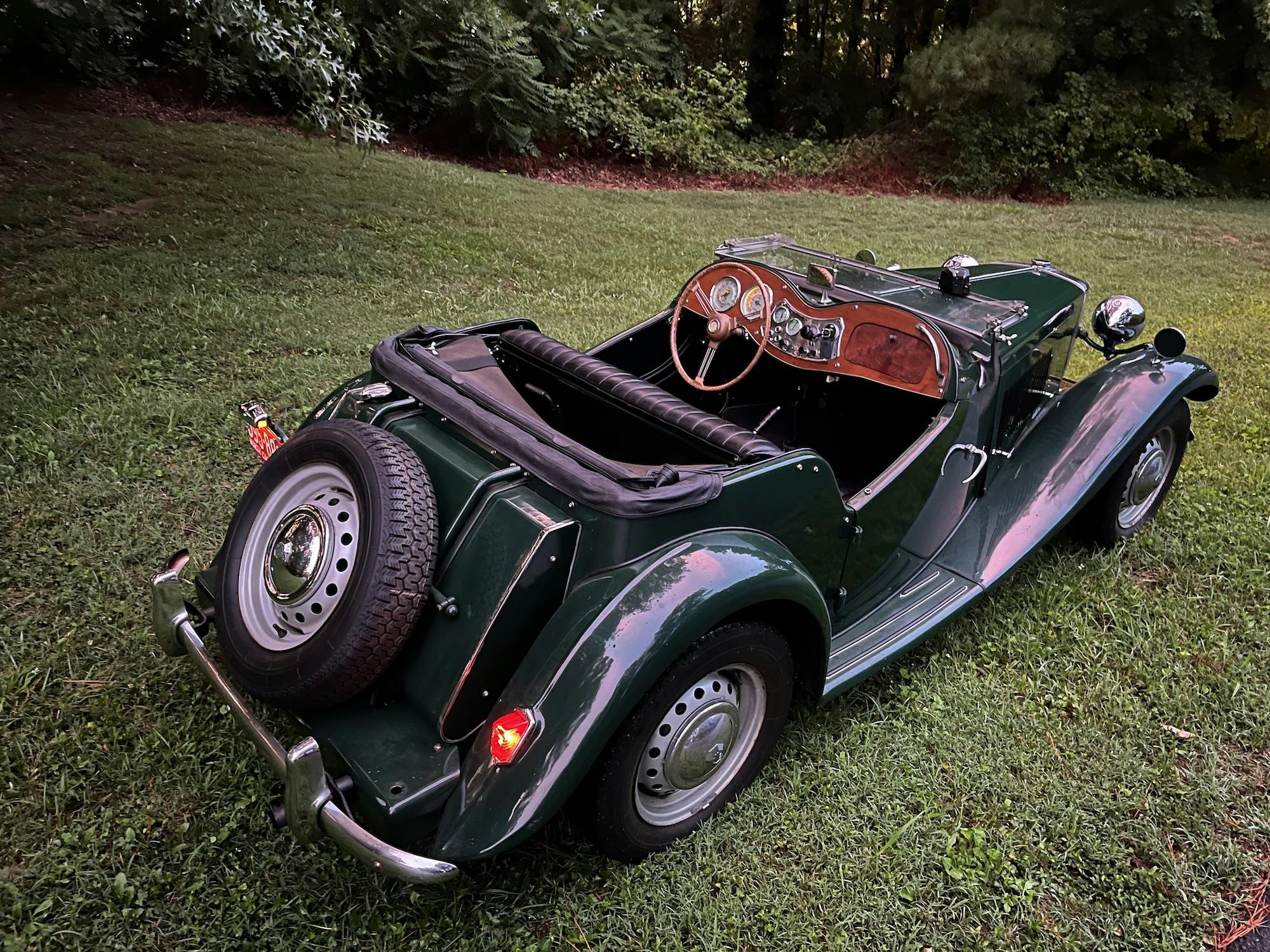
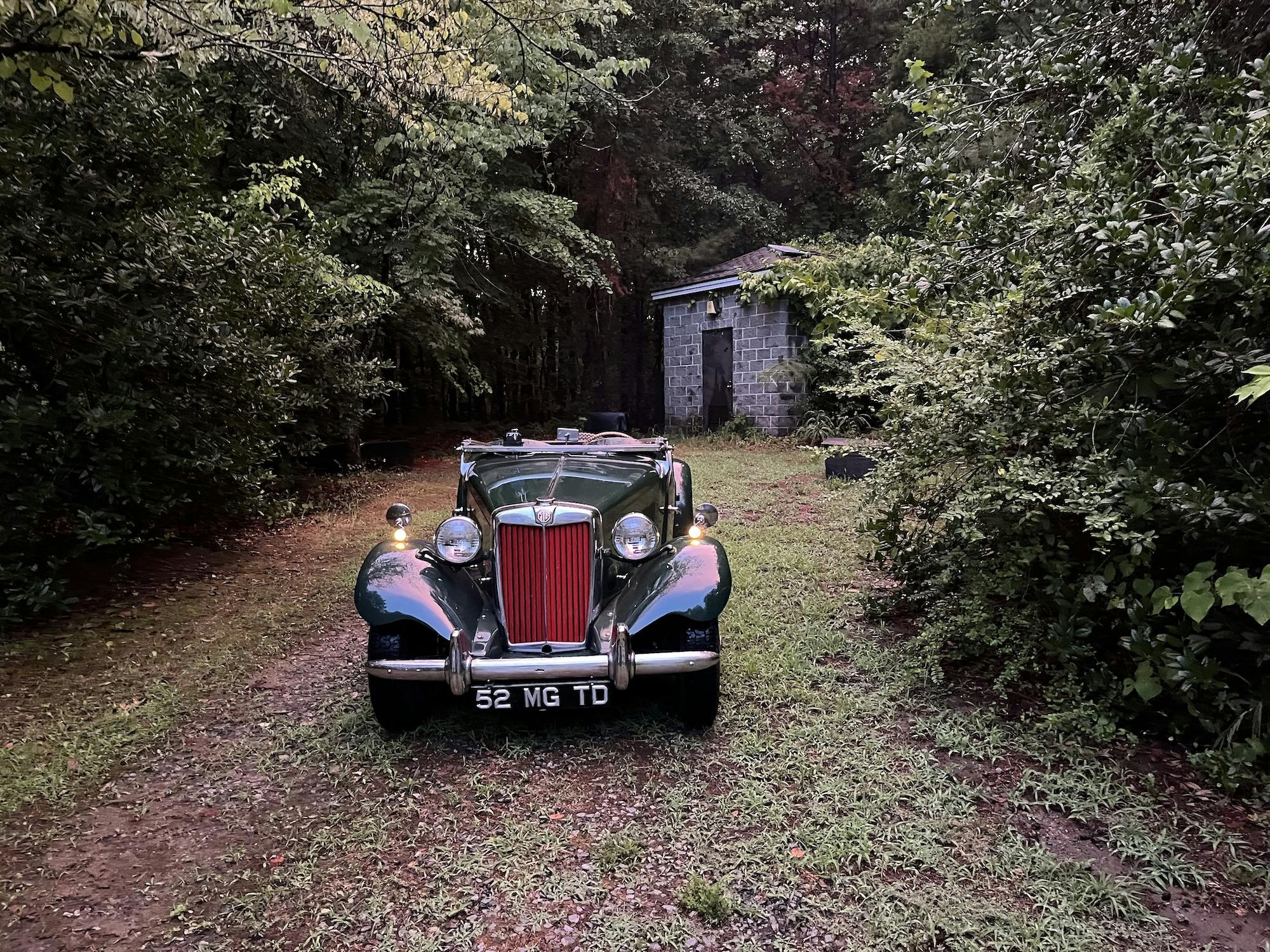
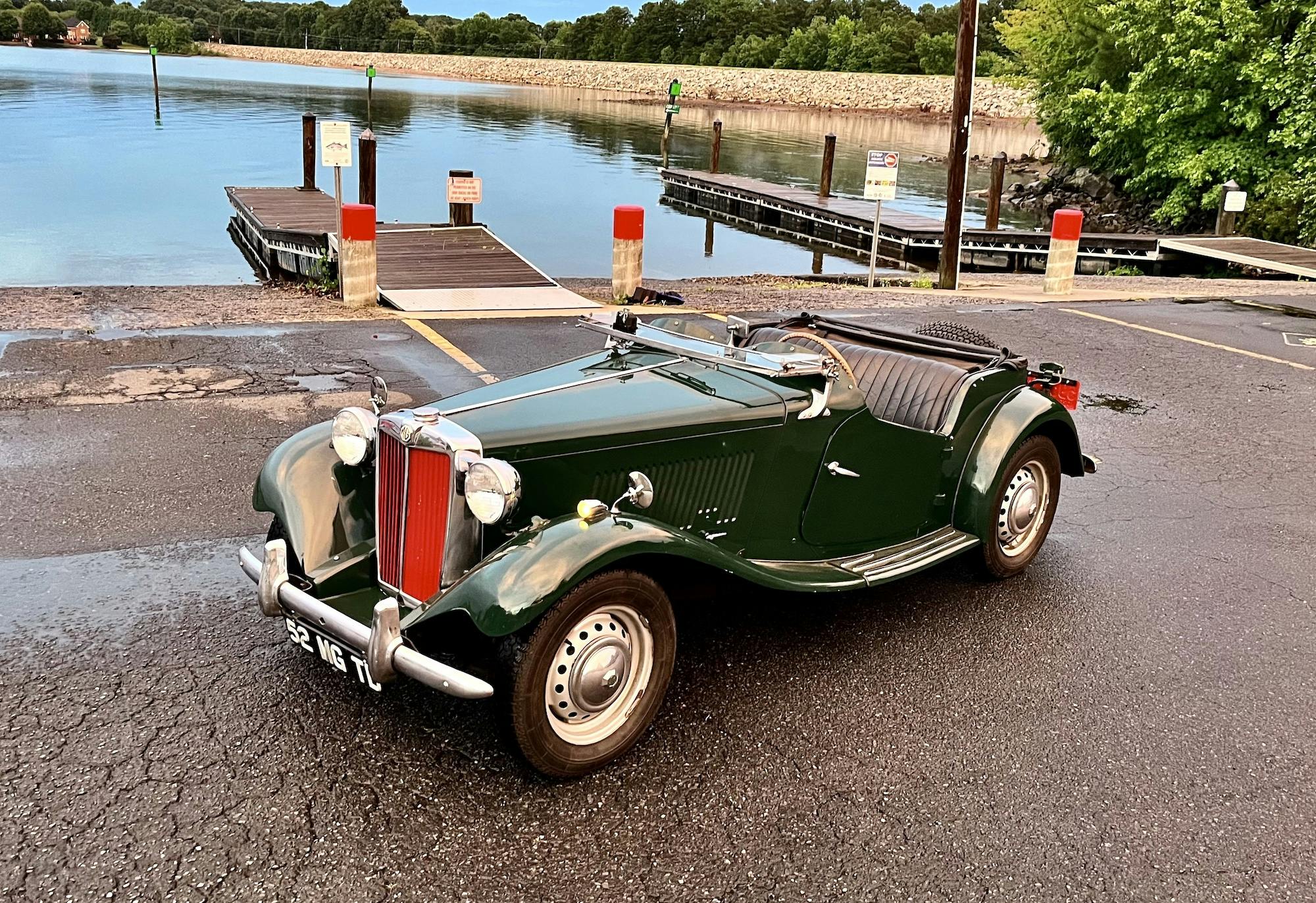
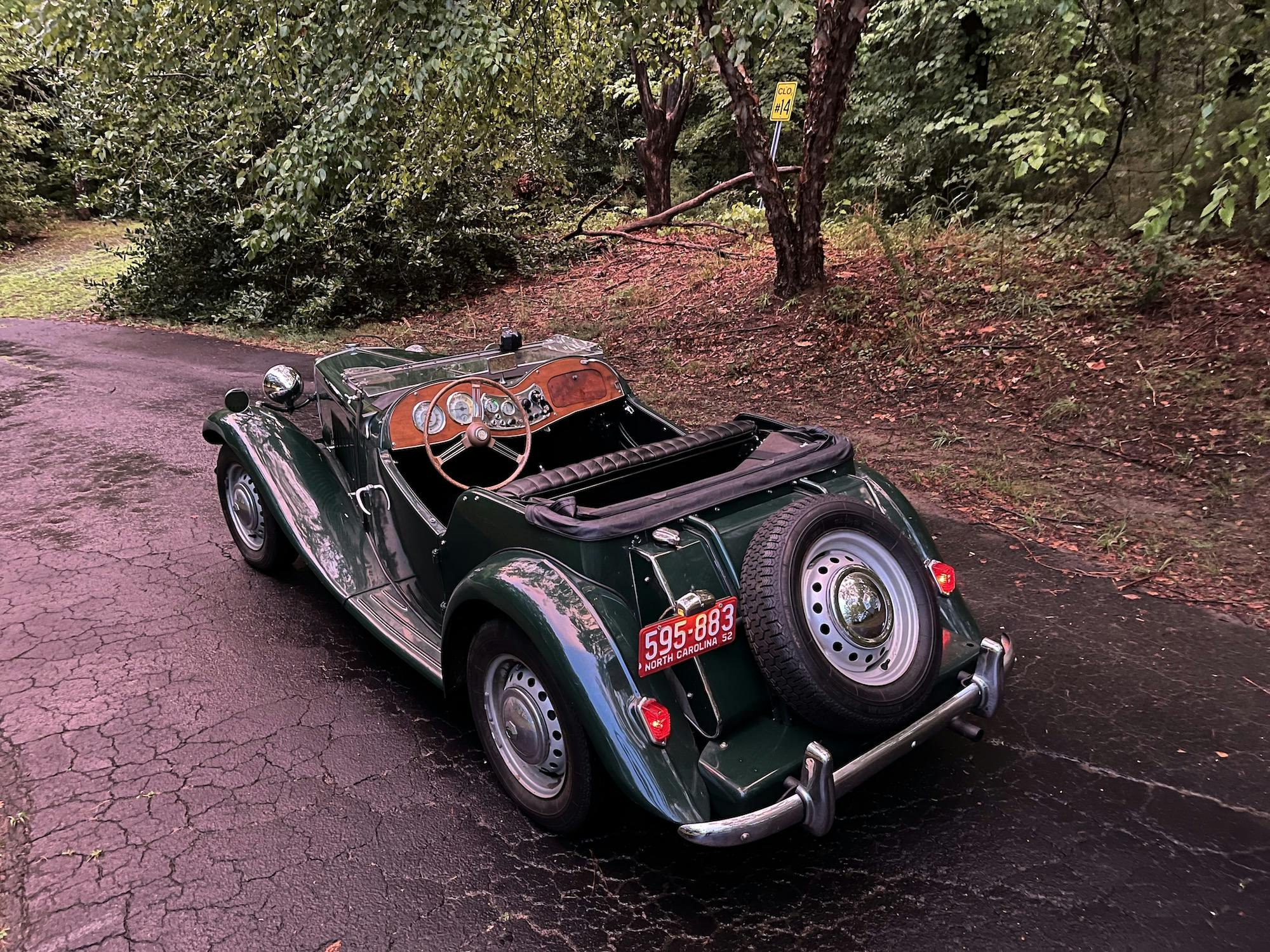
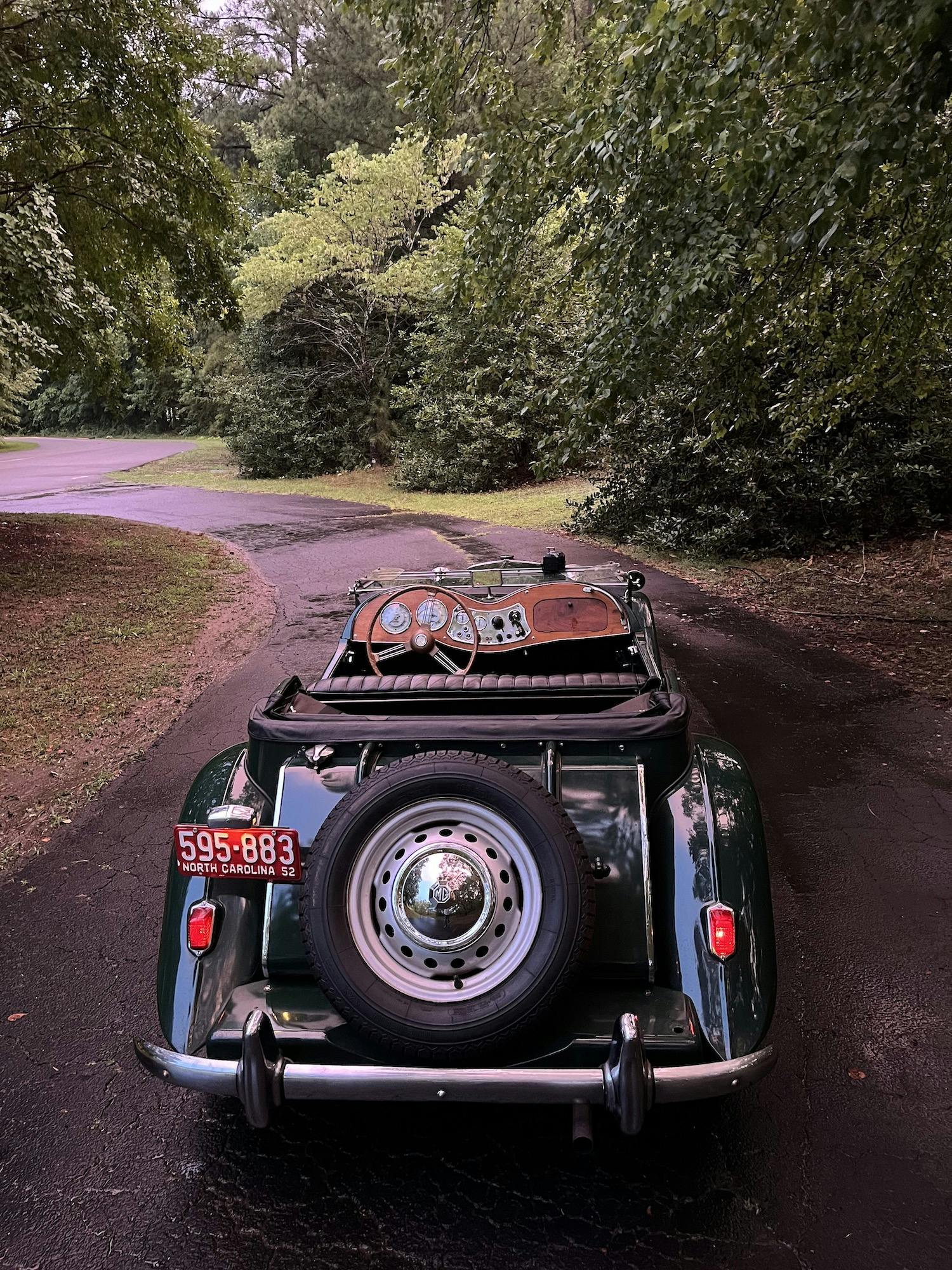


Norm, you were ALWAYS an MG guy. Who else would take off the Miatas perfectly good fuel injection, to see if SU carburetors could work. The answer of course is no better than they work on an MG.
Thanks for bringing back memories of early Miata days.
As owner of a 56 MGA, I top my hat. Great story. Readers might enjoy Truck and Blue Highways…
Great article Norm! I loved this as well as the one about your stolen 914 that I read while laughing out loud, all before I knew you had written it.
Thanks for the fun ride along experience with you, and Merry Christmas!
Carl
If you look at the first Miata (1989), you will see that it is in fact an updated Lotus Elan…in looks, flip up headlights, 1600cc overhead cam engine, independent rear suspension, all round disc brakes, with even balance front and back….nothing like an MG.
Really enjoyed your story! I’ve owned an MGB and have 2 midgets and a B in my barn that belong to a friend. Always loved the looks of the T’s and A’s but my days of repairing in a park in lot are just TOO much trouble now. Besides, they don’t give them away😎
Nice car and good story.
I Love the story. The first car I bought was a 1951 TD. I paid $200. cash while I was stationed at Camp Pendleton, California in 1962. I was being shipped to the far east so I decided to drive the TD back to my home town all the way across the country to Staten Island, New York. This being January and southern California, I forgot that the rest of the country was in the dead of winter. My first stop was during a snow storm in Flagstaff AZ. (no side curtains). In the morning I had to get a garage to heat the oil pan so the crank shaft would be able to turn over. The rest of the trip was uneventful till I got to Chicago where I needed to replace the dynamo. On to New York City and a garage to store the car at my parents place. It sat there for 3 or more years. After being discharged and returning to NY, I presented an engagement ring to my future wife while stopped at a traffic light driving the TD. She said yes. We drove the car with skis attached to the back spare wheel to the Vermont ski slopes with new snow tires all around. Had a great time!! It is now 2022 and I still have the car in the garage and drive it occasionally (in the summer only), along the Maine coast where we now live. I love that little car.
I thoroughly enjoyed this article given I inherited my father’s TD 6 years ago. He was actually a big GM collector – Chevys, Oldsmobiles, and Cadillacs. I actually introduced him to rhe marque with the reverse order of letters when I bought a 72 MGB in high school. Within 4 years he had the TD and went on to have an A and two Bs as well. I can also relate to the contrast to larger and higher powered American cars – one of my other cars is a 63 Studebaker Avanti.
My cuirrent TD was found in dry storage, of about 20 years. Thankfully the owners son had the forethought to drain the tank first. After getting it to the shop, it was running in 20 minutes, off of the crank handle. It’s had some other minor issues, as any 70 year old would, but it’s been reliable after working through 20 years of neglect. Of course, having said that, I’m sure I jinxed it.
Enjoyed the story, a classic Brit car adventure. Thanks.
I Love this story which brings back many memories of growing up helping my dad and brother repair the many varied makes and models of British cars that they owned, and raced. We were the family with the “odd” cars in the neighbourhood. At a young age I dreamed of owning a MG TD. The ’91 BRG my husband gifted me on my 50th became my more reliable and beloved Hagerty insured sports car, one I could count on and not spend more time repairing than driving:) Perhaps someday I will find my BRG MG TD to drive, and play with in a garage.
I hope that the author recognizes that historic and profound meaning of Abigail, that it is of Hebrew origin and means “My Father’s Happiness”.
driving only NA Miatas: ’93 B>ev, ’94M, ’95PEP, ’96R, ’97STO